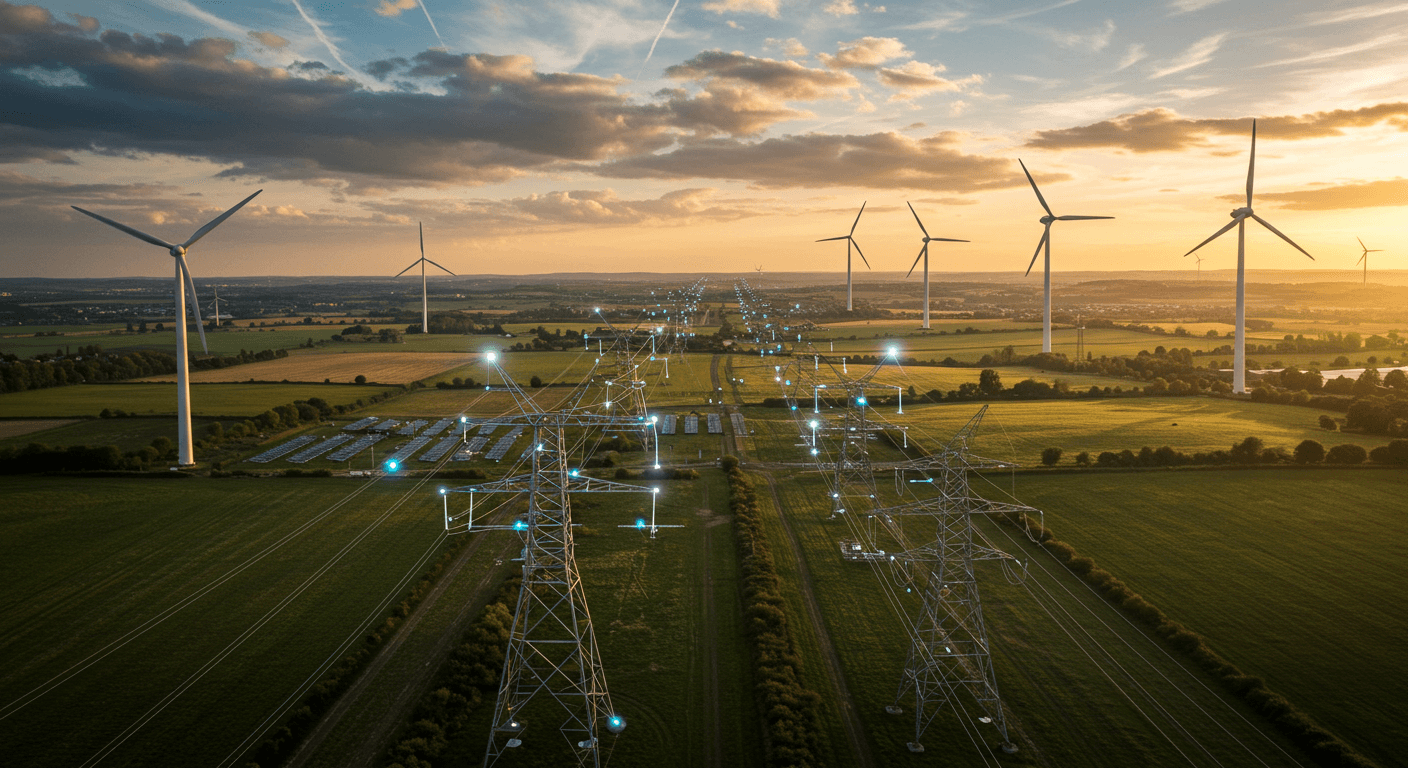Major grid operators in the UK have submitted a comprehensive £67 billion plan to revamp the nation’s aging electricity transmission infrastructure. This ambitious proposal aims to significantly increase the network’s capacity and facilitate the connection of new renewable energy sources, aligning with the government’s target of achieving clean power by 2030. The initiative represents a pivotal step in modernizing the UK’s energy grid, addressing long-standing bottlenecks, and accommodating the growing demand for electricity.
The Urgent Need for Grid Upgrades
The UK’s current electricity grid is struggling to keep pace with the rapid expansion of renewable energy and the increasing demand from new technologies like electric vehicles and heat pumps. The existing infrastructure, much of which is decades old, lacks the capacity to efficiently transport large amounts of electricity from remote renewable energy sites to major population centers. This has led to a substantial backlog of energy projects awaiting grid connection, with over 700 GW of projects currently in the queue. This bottleneck is hindering the country’s ability to achieve its ambitious decarbonization targets. The average timeline for a new connection to the network is currently 11-13 years, a timeframe that is unacceptable for a nation striving for a rapid energy transition.
The RIIO-T3 Framework
The grid operators’ plans are part of the next phase of Ofgem’s RIIO-T3 price control period, which covers the years 2026 to 2031. The RIIO framework (Revenue = Incentives + Innovation + Outputs) ensures that grid operators fulfill their energy obligations to consumers, with T3 being the third regulatory period of the framework. This framework is crucial in guiding the necessary investments to meet the UK’s energy demands and climate goals.
Key Players and Their Plans
Three major grid operators, National Grid, ScottishPower, and SSE, are at the forefront of this massive upgrade project. Each has proposed specific measures to enhance their respective networks:
National Grid’s Ambitious Plan
National Grid has unveiled the most ambitious plan, pledging to “double the amount of power we can transfer across the country and more than double the rate of connecting our customers.” Their proposed investments include:
- Upgrading approximately 3,500 km of existing overhead lines.
- Modernizing 10% of their existing substations.
- Constructing 25 new substations.
- Building around 1,100 km of new lines, including two of the longest high voltage direct current (HVDC) cables in the UK, potentially powering 4 million homes.
- Connecting 35GW of new generation and storage to the grid.
- Accommodating 19GVA of large-demand customers, such as data centers and gigafactories.
- Creating a further 26GW of future connection options.
National Grid’s plan also emphasizes the growing demand from data centers, projecting the connection of 900MVA of new data center demand by 2029. The company believes this investment will significantly support the decarbonization of existing sectors and the growth of new industries.
ScottishPower’s Infrastructure Boost
ScottishPower aims to build 12 new substations and upgrade 87 km of overhead lines and 35 km of underground cables. This investment will play a crucial role in supporting Scotland’s renewable energy potential, particularly its abundant offshore wind resources.
SSE’s Renewable Energy Expansion
SSE intends to introduce over 30 new substations during the RIIO-T3 period, adding 15.4 GW of renewable energy to its existing 10.6 GW capacity. SSE is also taking forward an ambitious investment plan that will see at least £20 billion invested in energy infrastructure this decade. This includes the recently completed 103-turbine Viking Energy onshore wind farm in Shetland.
The Government’s Clean Power 2030 Action Plan
The grid operators’ investment plans directly align with the UK government’s Clean Power 2030 Action Plan. This action plan aims to achieve at least 95% of Great Britain’s electricity consumption from clean sources by 2030. The plan recognizes the need for significant acceleration in building renewable energy capacity, upgrading the transmission network, and deploying electricity storage solutions.
Overcoming Grid Connection Challenges
The government acknowledges that achieving its clean power goals requires addressing the existing bottlenecks in grid connections. The current system, which operates on a “first-come, first-served” basis, often results in speculative projects securing queue positions, delaying the connection of viable projects. To remedy this, the government is working with the National Energy System Operator (NESO) and Ofgem to develop new regulations and streamline the connection process, moving towards a “first ready, first connected” system.
Economic and Social Impact
The investment in the UK’s electricity transmission network is expected to have significant positive economic and social impacts.
Job Creation
National Grid estimates that its proposals could support 55,000 new jobs by 2030. This significant job creation will not only boost the UK economy but also provide opportunities in various sectors related to energy infrastructure development. The National Grid ESO estimates that the plan could also create and sustain over 20,000 jobs annually, with 90% of the benefits occurring outside London and the Southeast.
Cost Savings for Consumers
By modernizing the grid and enabling greater use of renewable energy, the grid operators’ investment aims to reduce consumer costs. National Grid estimates that consumers could avoid around £12 billion in costs across the period covered by the plan. Moreover, upgrading the grid and enhancing its capacity will help reduce wind curtailment. Currently, when there is too much electricity being generated, grid operators have to pay generators to switch off, leading to wasted energy and unnecessary costs. Improved storage and transmission capacity will ensure that more of this renewable energy can be used, driving down prices.
Supporting the Growth of New Industries
The investment will also support the growth of new sectors, such as data centers and gigafactories, which are becoming increasingly important for the UK’s economy. These industries require significant amounts of electricity, and a modern, reliable grid is essential for their continued growth and success.
Challenges and Considerations
While the £67 billion investment plan is a major step forward, several challenges and considerations remain:
Regulatory Approval
The proposed plans are subject to regulatory approval from Ofgem. The regulator will publish its draft determinations in Q3 2025, with a final decision expected later in the year. It is crucial that Ofgem creates an investable framework to ensure that the ambitious plans can be delivered at the scale and pace required to meet the UK’s climate goals.
Workforce and Supply Chain
The sheer scale of the proposed infrastructure upgrades will require a substantial workforce and a robust supply chain. The government and industry must work together to address any potential skills gaps and ensure that the necessary materials and equipment are available to complete the projects on time and within budget.
Public Support and Planning Processes
There is also a potential for public backlash against the build-out of a near-unprecedented amount of energy infrastructure. Streamlining planning processes will be critical. The government is promising a new National Planning Policy Framework by the end of 2024 and updates to all National Policy Statements by next summer. They are also introducing a new bill to “create a win-win for development and nature” and streamline the processes for critical infrastructure.
Conclusion
The £67 billion investment plan submitted by UK grid operators marks a significant and necessary step towards modernizing the country’s electricity transmission network. This massive project will enable the UK to accommodate more renewable energy, reduce reliance on fossil fuels, and meet its ambitious decarbonization targets. While challenges remain, the plan’s potential economic and environmental benefits make it a critical undertaking for the UK’s future. The success of this endeavor will rely on close collaboration between the government, regulators, grid operators, and the public.

